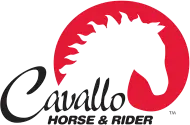My Breakup Story – Goodbye to Farrier Don
-
May 3, 2023
-
1:03 pm

Your Horse's Hooves are In Your Hands
As President of Cavallo, one of the most interesting parts of my job is the personal stories you all share with me about your experience with caring for your horse’s hooves. The process of transitioning from shod to barefoot or making a change from one farrier to another is fraught with a variety of emotions and tumultuous growing pains. Whether you want to improve a condition or prevent an ailment, your involvement in the treatment of your horse’s hooves is imperative to your horse’s success.
Remembering "Don", My First Farrier
Years ago, as a new horse owner, I imagined that my farrier would be the saviour who would spare my horse from lameness, disease, contracted heels, thrush, seedy toe and all those other horrible afflictions! When my first farrier arrived on my property he had an air about him like he knew something no one else knew. I imagined he had just been breaking a feisty colt. For right or wrong, I immediately looked up to him. “Don X” was a man’s man.
Intimidated by Lack of Knowledge

I remember getting tongue-tied. Honestly, I am a woman with a university education and yet I felt unable to speak. I felt confused and vulnerable. He sauntered slowly around my horse, Rocky. He grunted, hummed and hawed. All of these expressions seemed extremely important. Then, in what appeared to be definitive conviction, he got to work – with “big man” tools, clanging metal to the hissing fire of his forge. It was an awesome evocation of respect. That is, until I began to understand the procedure, do my homework and ask the pertinent questions.
This is when my skepticism replaced esteem. If Don had answered any of my questions with something more than patronizing condescension, I would have backed off. Instead what he said was, “Carole this is man’s work. You leave this business of the horse feet to me – you just get your butt in the saddle and ride”. I felt insulted. This was not the educated answer I was looking for.
Asking Hard Questions and Trusting Your Gut
Sometimes there is just no easy way. Back to the books I went, through diagrams and veterinary manuals. I remember pouring over hoof care textbooks and, even then, it made my mind feel soft and mushy like scrambled eggs – so much scientific data! Maybe Don the Farrier was right? Maybe I should just get in the saddle and ride. The thing is, when certain doors open to unveil a compelling new direction, there is no turning back.
I attended seminars. The leg and hoof dissections left me washing blood and putrid stench off my skin for days. I joined and promoted communities of like-minded advocates. Ultimately, I was rewarded with understanding. My line of questioning to Don was indeed valid. I viewed Don’s work with increased scrutiny. Big ‘wows’ in the hairline, one side of the hoof consistently higher than the other. Don’s right side was stronger than his left, which resulted in more horn off one side of the hoof than the other, as he worked his way around. This meant imbalances and asymmetries because he would work from one front around to the hind and then up to the other front. So, the high side was on the opposite side of the horse.
Excuses Aren't Comforting for Your Horse
Underslung heels? Oh, ok, he’d propose fixing those by extending the metal shoes behind so that the heels grow into them. It never works because the entire hoof grows, not just the heels. Contracted heels? Oh, ok, we’ll just widen the shoes a smidge, as if a ½ cm wider shoe would create a wider hoof. But, anyway, can’t do it too much or they will step on the overhang and pull the shoe off. Shoe pulled off? We’ll just hammer eight nails in, and make sure the last ones are right at the back.
I’d question, “But Don, it’s not working – my horse still has contraction, is underslung, imbalanced and moves stiffly.”
“You just can’t see the positive changes”, he’d say, “This was all created by the last farrier and takes some time to fix. Your horse is happy. Get your butt in the saddle and ride.” This was his patronizing response. Nothing changes.
Breaking Up is Hard to Do
From that day forward, I undertook to make my own decisions for the well-being of my horse. I would never again accept condescension. I would not be patronized or demeaned.
Really, it wasn’t that my Rocky had extraordinary problems. I went on to own four more horses that I could not keep 100% sound all the time and whose hoofs rarely looked good enough to my developing, discerning eye. This is a common pattern for us. In an effort to improve we change farriers, experiment with various feeds, supplements or hoof dressings, give our horses time off or try different exercise programs; all with no consistent results. It can be very discouraging.
By writing these articles, I hope to assure you that you are not alone. You are no longer obliged to keep your farrier, doing the same thing to your horses, simply because there seems to be no better option. Our entire industry is changing – and FAST. There may be some tough decisions to make, especially when we ask our long-time family-friend-farrier to include us in the hoof care decisions and he refuses!
Making the BIG Change
At Cavallo, we sympathize, because we have been there ourselves. It’s like breaking up with your best friend or teacher or hairdresser! Sometimes you must leave people behind. But do it! Take control. Take your power. Be non-negotiable about getting your requests met. Do not waiver from your own beliefs about what is right. Make a commitment to deserving what is true, both for yourself and for your horse. You now have options.
I Said Farewell to My Farrier - Now What?

Each year, there are competent new trimmers entering the previously male-dominated farrier world. We attended the 2022 Progressive Hoof Care Practitioners (PHCP) Conference and were highly inspired by the trimmers we met and their dedication to learning and seeking new information. Cavallo Horse & Rider has supported the organization’s mission since its 2008 start, when a very small but dedicated handful of people formed a group. Their mission was to offer support towards an alternative and more holistic way of caring for the horse’s hoof. Now 14 years later, their membership has exploded to almost four hundred Progressive Hoof Care Practitioners. Their program is innovative and creative, offering education and a supportive community to the open-minded and curious horse folks who strive to improve the welfare of their horses. If you are looking for a new trimmer, the PHPC Practitioner Directory is an excellent place to start!
This group of students and practitioners is helping us carve the preeminent path to the future of hoof care. The changes they are making to the well-being of horses are nothing short of extraordinary. What struck me most was the broad-minded attitudes. This wasn’t about ‘do it this way because it’s the right way,’ or any sort of closed, defensive stance to the way things have been done in the past. This group has a commitment to learning, listening, and to being collaborative and creative.
Walking Your New Hoof Care Path
Find someone you like, someone who meets you on your level. Someone without a condescending attitude and who is willing to spend the time it takes to help you and your horse. Enter into a relationship with your new trimmer or farrier based on mutual respect. If you feel there is a better option than those metal shoes, pull them off. You now have healthier (and cheaper) options. Let us help you with the total comfort and protection of Cavallo Hoof Boots. We are here to support, guide and assist you in every way we can.
Wishing you many happy trails,
-Carole

